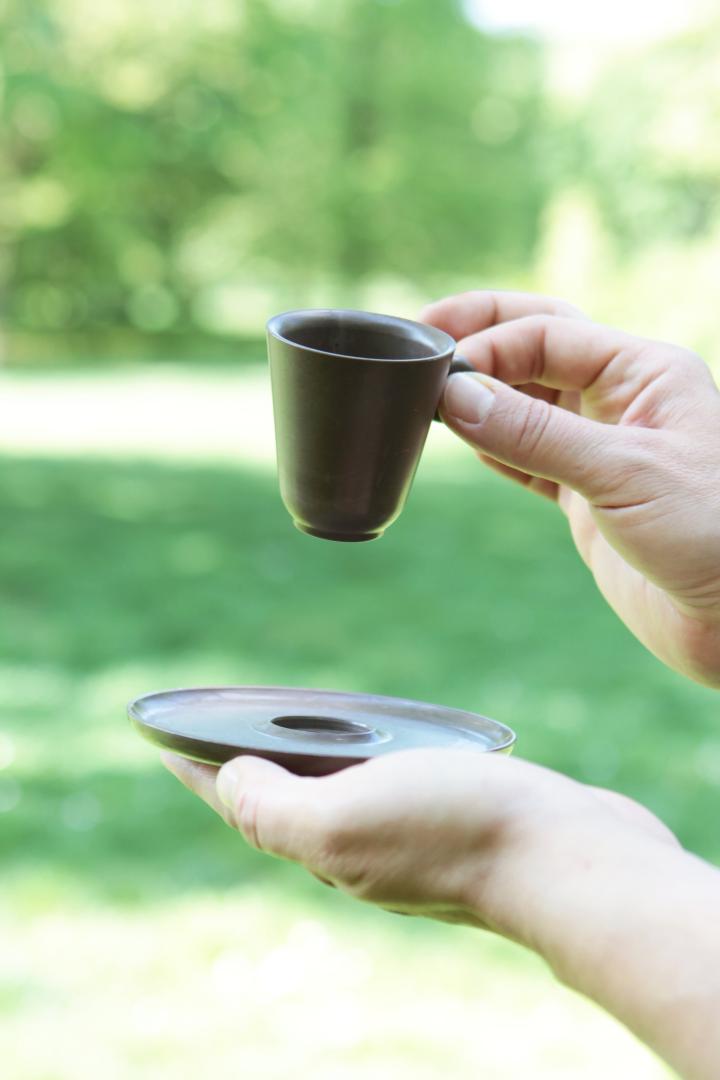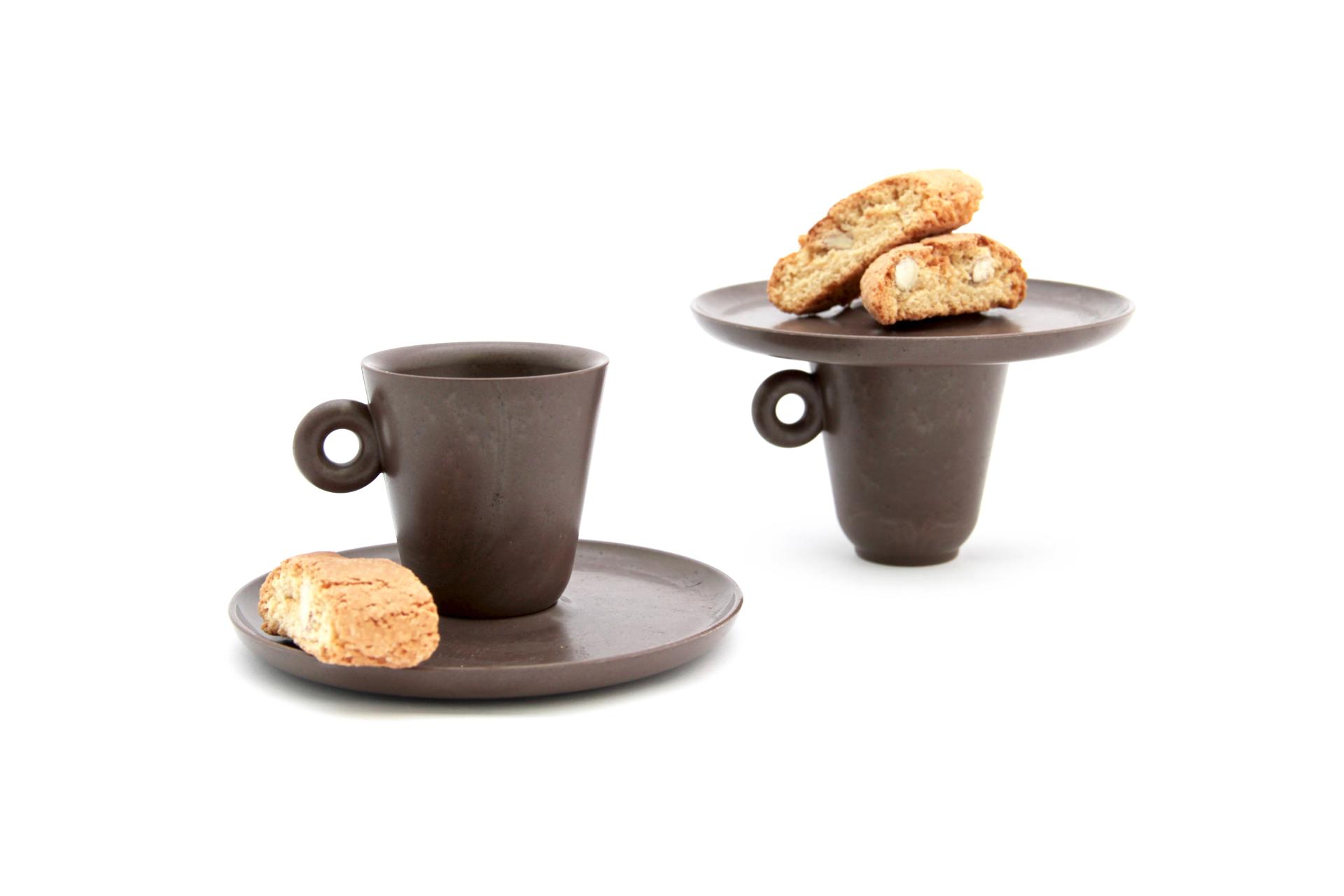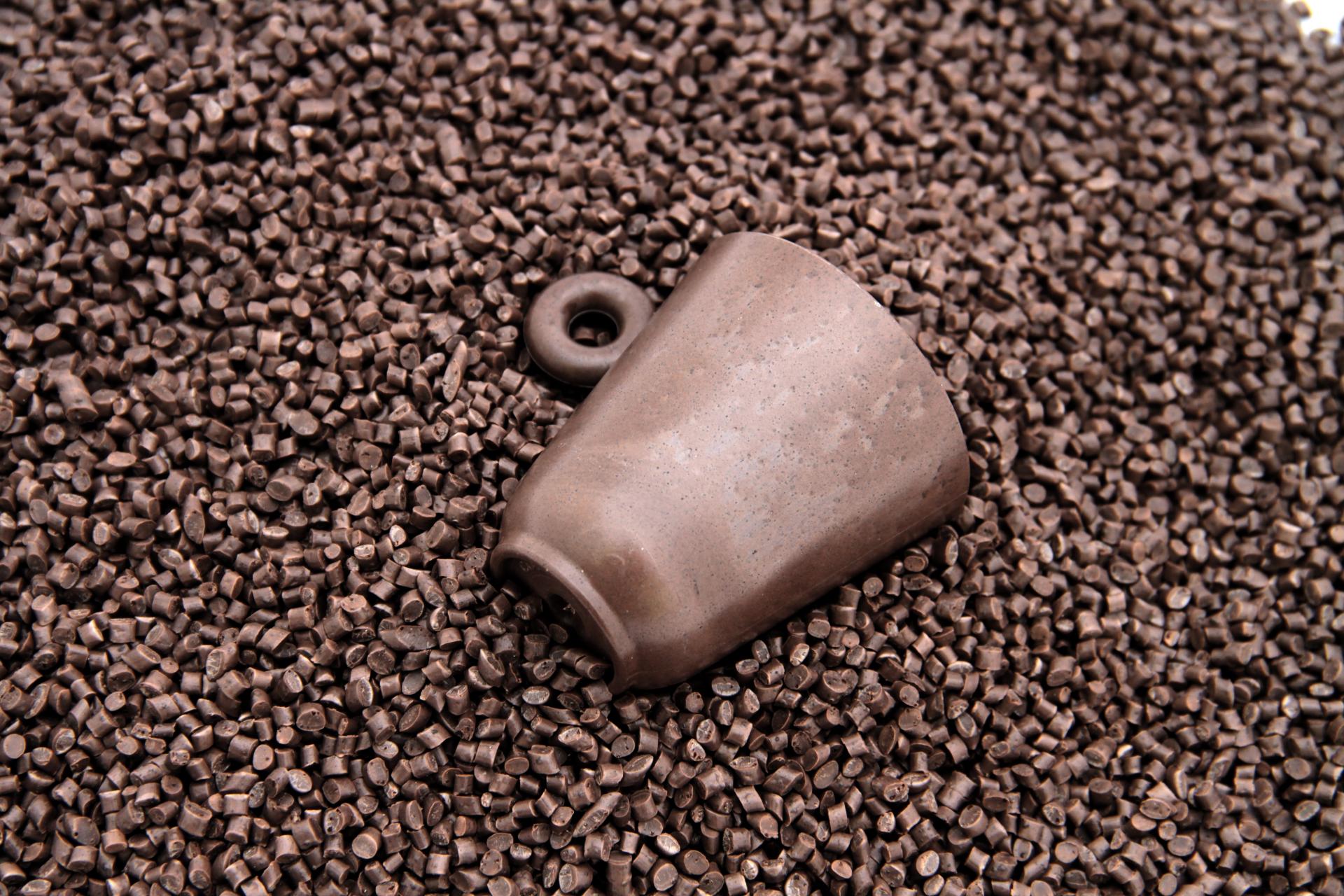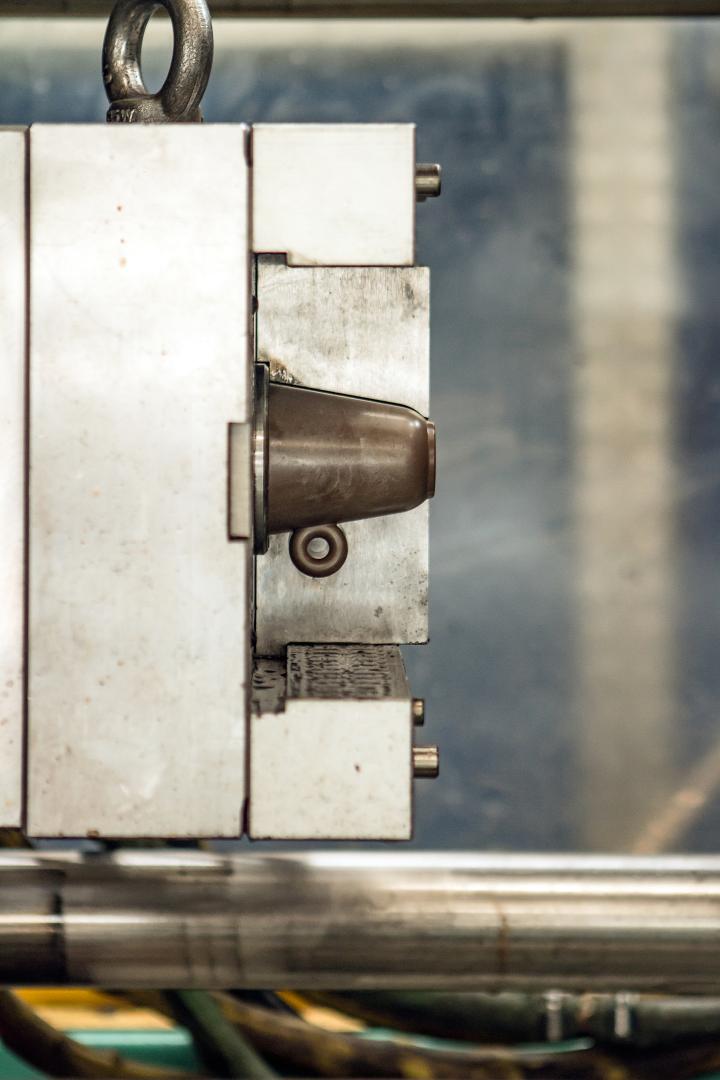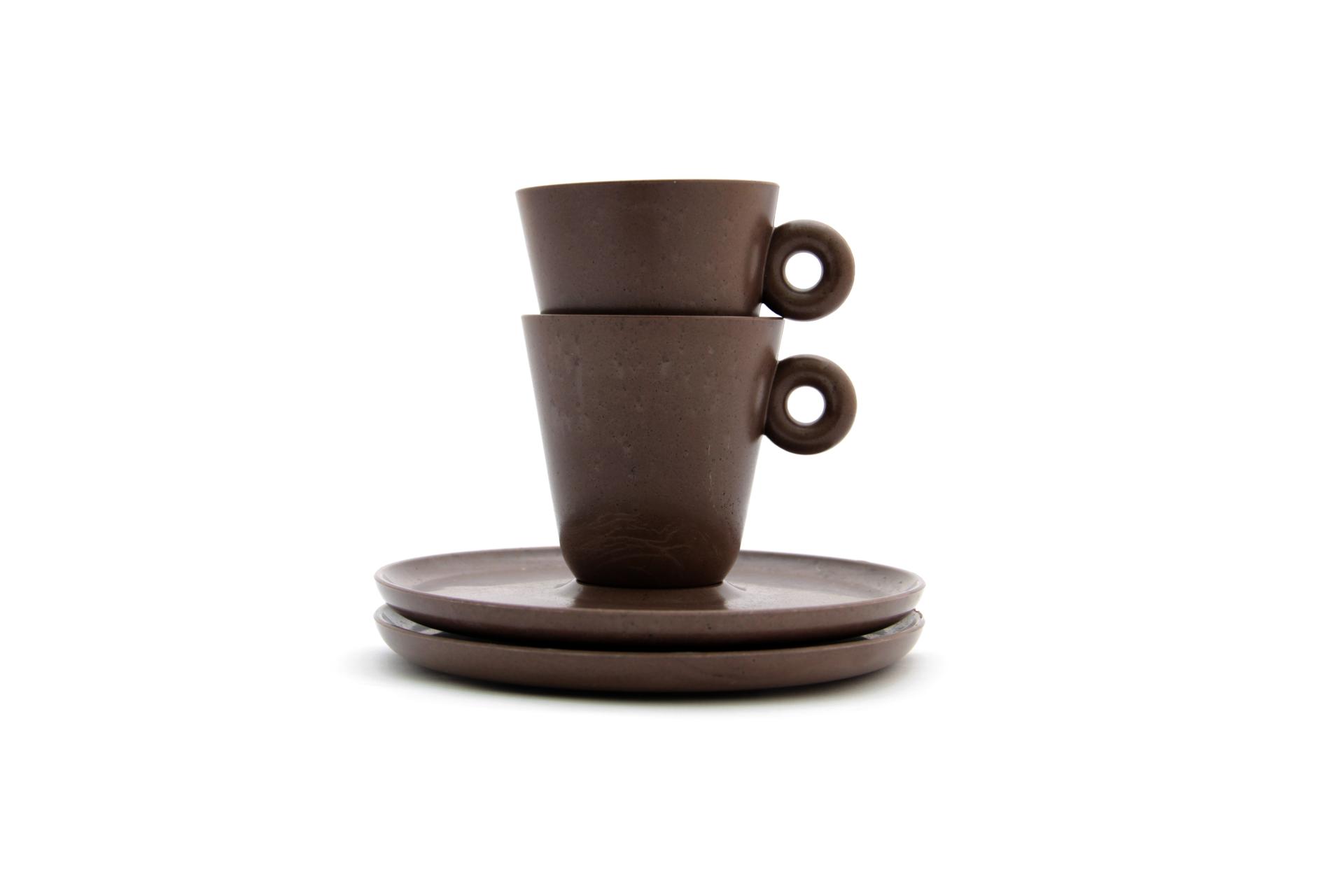Coffeefrom
Basic information
Project Title
Full project title
Category
Project Description
Today, Coffeefrom is the innovative bio-based material born from recycled coffee grounds and a mixture of biopolymers, 100% produced and designed in Italy. For food industry, coffee grounds constitute a waste product - often sent to landfill, where they produce huge CO 2 emissions, high management and logistics costs. For us, they represent a valuable raw material waiting for a second life. From coffee, to coffee, the first Coffeefrom product is a Cup & Saucer for an ideal espresso tastin
Geographical Scope
Project Region
Urban or rural issues
Physical or other transformations
EU Programme or fund
Which funds
Description of the project
Summary
Coffeefrom is an innovative material made of biopolymers and recycled coffee grounds, 100% made in Italy. Born as a spin-off of Il Giardinone Social Cooperative, the project realizes a new vision of industrial coffee wastes as by-products. In collaboration with the Polytechnic of Milan and companies operating in the bioplastics supply chain, we have created an innovative bio-based material, Coffeefrom®, which represents a valuable alternative to traditional plastics. As a tribute to the Italian art of the espresso tasting, we have created and industrialized our first Coffeefrom® design product: the espresso set made of cup and saucer, from coffee to coffee. Being a social business, our project is based on a strong social responsibility. We put people first, starting from the integration of fragile workers into daily activities. Our goal is to generate a positive impact on local communities, in order to make inclusivity our distinctive element. In this way, environmental and social responsibility are matched together in our final products.
Key objectives for sustainability
The lesson we have learned is that, although coffee grounds often represent an industrial waste of many sectors like food industry and catering, they still store a high quality and value content. Inspired by the richness of the material, we want to turn coffee wastes into a new resource, thus promoting the reuse of eco-composite plastic materials and reducing the emissions of CO2. To do this, we built a supply chain where resources, know-how, materials and skills are completely integrated, according to the industrial symbiosis model. In Italy, 200.000-300.000 tons of coffee grounds are produced every year, which means 45.000 kilos per day. Under these tons of coffee, there are also high management costs and CO2 emissions. In this context, we realize the Extended producer responsibility goals of the food industry, by taking tons of coffee wastes as by-products for new bio-based materials. Food and beverage packaging, tableware and promotional industries are increasingly looking for new functional and ecological solutions for their products; this is why we partner with legal and environmental consultants, university, compounders and plastic companies in order to assess new performing coffee-based materials and meet the new needs of the market. Today our Coffeefrom® material is biodegradable and made of PLA: we are already working to double the amount of coffee grounds used in our current material (15-20%) in order to reduce biopolymers quantities, while testing new bio-based compounds that could stand more than 60° degrees in the dishwashing machine.
Key objectives for aesthetics and quality
As for our first product, the Coffeefrom cup and saucer are a tribute to the Italian art of the espresso tasting. We have created a coffee cup made from coffee and designed for coffee. Each curve has been studied and balanced to enhance taste, flavor and warmth, offering an ideal tasting experience to all coffee lovers. Among them, the egg-shaped bottom, which prevents the cream from breaking; the thickness at the bottom of the cup, to better preserve the heat and the structure itself, which ensures its stackability. Moreover, the handle and the cup weight ensure an ergonomic grip, which are typical of ceramic and glass coffee cups. Saucers are large enough to host a candy and they can work to cover cups, as they are perfectly stackable. About aesthetics, coffee gives a natural color to the product, while coffee veins are visible at sight. The cup is durable and break-proof, durable and food safe certified (FCM).
Key objectives for inclusion
We care about the planet and people: this is why we want to make the difference, acting with a concrete re-waste philosophy. We are social business first, and circular economy helps us to scale up our social impact; as a matter of fact, we created job opportunities for fragile workers, where our tutors assess their personal story and build together a professional path. We also closely collaborate with other local social businesses, thus marking a positive impact on our territory. Acting at an industrial level means rethinking an established production practice. We were able to create a perfect liaison between profit and non-profit worlds, where the supply chain partners - coming from “traditional” worlds like plastic and injection molding - understood the opportunity to diversify their businesses and stand for a greener cause. For companies, Coffeefrom is an opportunity to rethink their industrial practice, where coffee can be used as a raw material to make new products and reduce plastics; on the other hand, companies have also the chance to co-create a tailor-made product to be used internally. This means that they approve our model and show their interest in sharing values.
Results in relation to category
In 2021, we managed to reuse 1 ton of coffee to produce more than 5.000 cups and 6.000 Easter egg’s boxes. We employed 2 part-time fragile workers to support logistics and 3 more workers.
We invested € 200.000 for Research and development, molding and team set up in 2021; we created € 70.000 income for our supply chain partners and €40.000 in revenues in the second semester of 2021.
How Citizens benefit
Our designers work at University, so students often represent our first source for product feedbacks. We also collaborate with schools and European projects during workshops, where we have the chance to show what we do and raise awareness on circular economy topics. Together with our distributors, we also organized open events to present our project and get people feedback. In the design process of our next product - a mug - we organized some focus group sessions involving companies and students to get their impressions.
Physical or other transformations
Innovative character
Coffeefrom project is a completed project. Coffee wastes, from a legal point of view, require lots of permits and certifications to be collected and trasformed. Not only do we achieve these permits, but we also operate at an industrial scale. There are a few projects in Italy dealing with coffee reuse but they are limited in terms of production capacity (3D printing) and impact (collecting coffee from bars). We believe that the best way to deal with plastic is to limit it for the necessary uses. We have opted to run a project against the throw-away and single-use culture and rehabilitate the value of waste as source of inspiration and new resource. We get tons of coffee grounds as waste from industry and we process it to make a solid versatile bio-based material. The bio-based version is just the first step of infinite expressive possibilities, where coffee grounds will be soon matched with other pallets to reduce the plastic fillers. Moreover, being a social business allows us to spread innovation and support companies to achieve their own social goals.
Learning transferred to other parties
Our goal is to create a contamination between profit and non-profit worlds by means of circular economy. This model could be a turning point for those industries that are trying to approach sustainability for the first time. They basically would have the opportunity to scale up their know how by partnering with a social and circular project. The result of this new practice would increase their workload, their resources and credibility in terms of sustainability (see results achieved).

